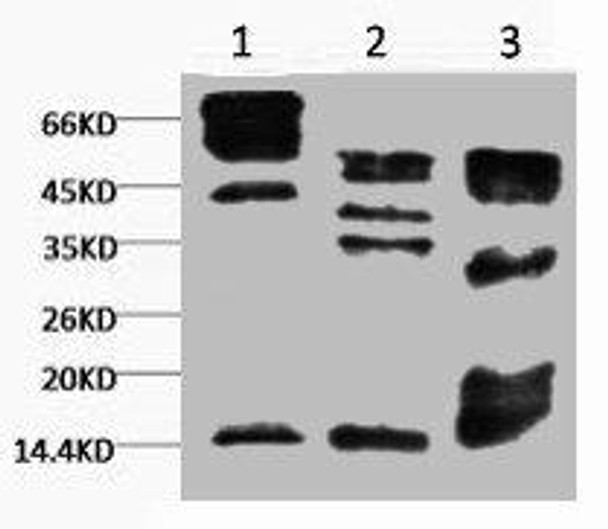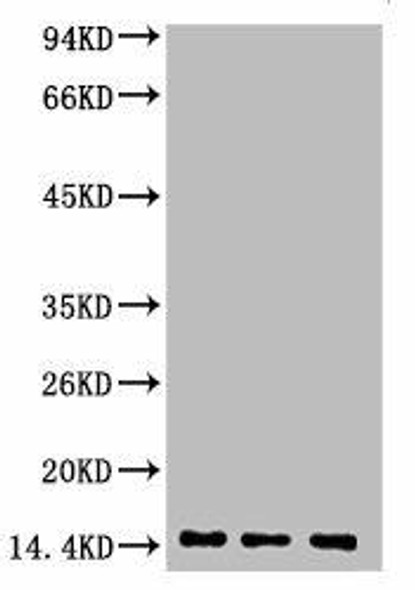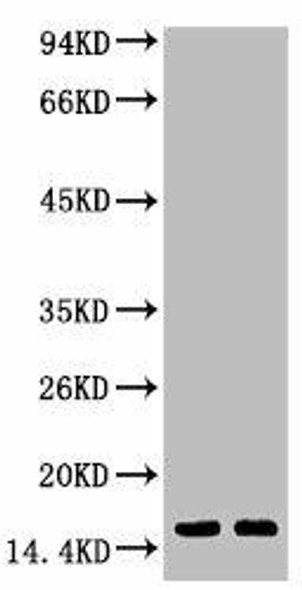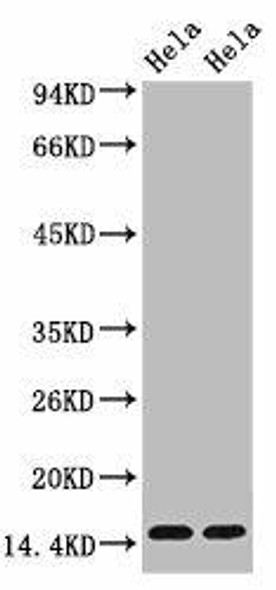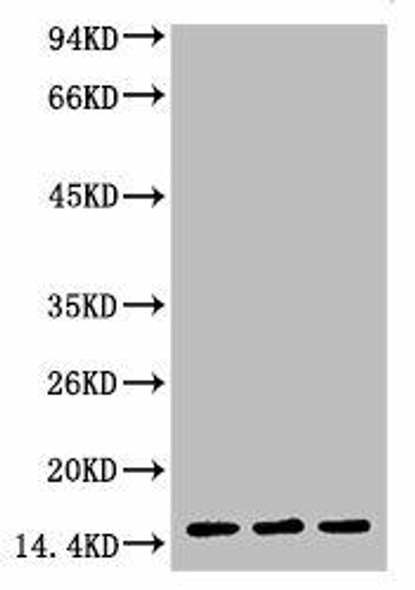Description
Anti-Tri-methyl-Histone H3(K9) Antibody (MACO0071)
The Tri-Methyl Histone H3K9 Monoclonal Antibody (MACO0071) is a cutting-edge research tool designed for the study of post-translational modifications on histone H3, specifically at the lysine 9 residue. This monoclonal antibody, produced using state-of-the-art technology, is highly specific and sensitive, making it an ideal choice for researchers investigating epigenetic regulation mechanisms.Histone modifications like tri-methylation at H3K9 play a crucial role in the regulation of gene expression and chromatin structure, impacting various biological processes such as development, differentiation, and disease. The MACO0071 antibody enables the detection and analysis of tri-methylated H3K9 levels in cells and tissues, allowing for a deeper understanding of epigenetic modifications and their functional significance.
With its high specificity and reliability in applications like immunoprecipitation and chromatin immunoprecipitation, the Tri-Methyl Histone H3K9 Monoclonal Antibody is an indispensable tool for researchers in fields such as molecular biology, genetics, and cancer research. By unraveling the complex interplay of histone modifications, this antibody contributes to the advancement of knowledge and potential therapeutic strategies targeting epigenetic dysregulation.
| Product Name: | Anti-Tri-methyl-Histone H3(K9) Antibody |
| Product Sku: | MACO0071 |
| Size: | 50ug |
| Host Species: | Mouse |
| Tested Applications: | ELISA, WB |
| Recommended Dilutions: | WB:1:500-1:5000 |
| Species Reactivity: | Human,Mouse,Rat |
| Immunogen: | Synthetic Peptide |
| Form: | Liquid |
| Storage Buffer: | PBS, pH 7.4, containing 0.02% sodium azide as Preservative and 50% Glycerol. |
| Purification Method: | The antibody was affinity-purified from mouse ascites by affinity-chromatography using specific immunogen. |
| Clonality: | Monoclonal |
| Isotype: | IgG |
| Conjugate: | Non-conjugated |
| Background: | |
| Synonyms: | HIST1H3A; H3FA; HIST1H3B; H3FL; HIST1H3C; H3FC; HIST1H3D; H3FB; HIST1H3E; H3FD; HIST1H3F; H3FI; HIST1H3G; H3FH; HIST1H3H; H3FK; HIST1H3I; H3FF; HIST1H3J; H3FJ; Histone H3.1; Histone H3/a; Histone H3/b; Histone H3/c; Histone H3/d; Histone H3/f; Histone H3/ |
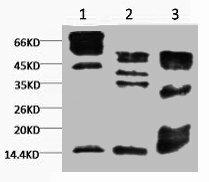 | Western blot analysis of 1) Hela, 2) Rat Testis tissue, 3) Raw264.7, diluted at 1:2000. |
| UniProt Protein Function: | H3: Core component of nucleosome. Nucleosomes wrap and compact DNA into chromatin, limiting DNA accessibility to the cellular machineries which require DNA as a template. Histones thereby play a central role in transcription regulation, DNA repair, DNA replication and chromosomal stability. DNA accessibility is regulated via a complex set of post-translational modifications of histones, also called histone code, and nucleosome remodeling. The nucleosome is a histone octamer containing two molecules each of H2A, H2B, H3 and H4 assembled in one H3-H4 heterotetramer and two H2A-H2B heterodimers. The octamer wraps approximately 147 bp of DNA. Belongs to the histone H3 family. |
| UniProt Protein Details: | Protein type:DNA-binding Chromosomal Location of Human Ortholog: 6p22.2 Cellular Component: extracellular region; membrane; nuclear chromosome; nuclear chromosome, telomeric region; nucleoplasm; nucleosome; nucleus; protein complex Molecular Function:cadherin binding; histone binding; protein binding Biological Process: blood coagulation; cellular protein metabolic process; chromatin silencing at rDNA; DNA replication-dependent nucleosome assembly; establishment and/or maintenance of chromatin architecture; negative regulation of gene expression, epigenetic; nucleosome assembly; positive regulation of gene expression, epigenetic; protein heterotetramerization; RNA-mediated gene silencing; telomere organization and biogenesis |
| NCBI Summary: | Histones are basic nuclear proteins that are responsible for the nucleosome structure of the chromosomal fiber in eukaryotes. Two molecules of each of the four core histones (H2A, H2B, H3, and H4) form an octamer, around which approximately 146 bp of DNA is wrapped in repeating units, called nucleosomes. The linker histone, H1, interacts with linker DNA between nucleosomes and functions in the compaction of chromatin into higher order structures. This gene is intronless and encodes a replication-dependent histone that is a member of the histone H3 family. Transcripts from this gene lack polyA tails but instead contain a palindromic termination element. This gene is found in the small histone gene cluster on chromosome 6p22-p21.3. [provided by RefSeq, Aug 2015] |
| UniProt Code: | P68431 |
| NCBI GenInfo Identifier: | 55977055 |
| NCBI Gene ID: | 8357 |
| NCBI Accession: | P68431.2 |
| UniProt Secondary Accession: | P68431,P02295, P02296, P16106, Q6ISV8, Q6NWP8, Q6NWP9 Q6NXU4, Q71DJ3, Q93081, A0PJT7, A5PLR1, |
| UniProt Related Accession: | P68431 |
| Molecular Weight: | 15kDa |
| NCBI Full Name: | Histone H3.1 |
| NCBI Synonym Full Names: | histone cluster 1 H3 family member h |
| NCBI Official Symbol: | HIST1H3H |
| NCBI Official Synonym Symbols: | H3/k; H3FK; H3F1K |
| NCBI Protein Information: | histone H3.1 |
| UniProt Protein Name: | Histone H3.1 |
| UniProt Synonym Protein Names: | Histone H3/a; Histone H3/b; Histone H3/c; Histone H3/d; Histone H3/f; Histone H3/h; Histone H3/i; Histone H3/j; Histone H3/k; Histone H3/l |
| UniProt Gene Name: | HIST1H3A |

